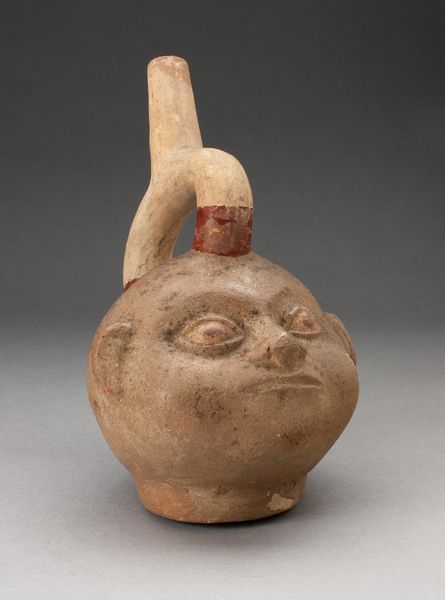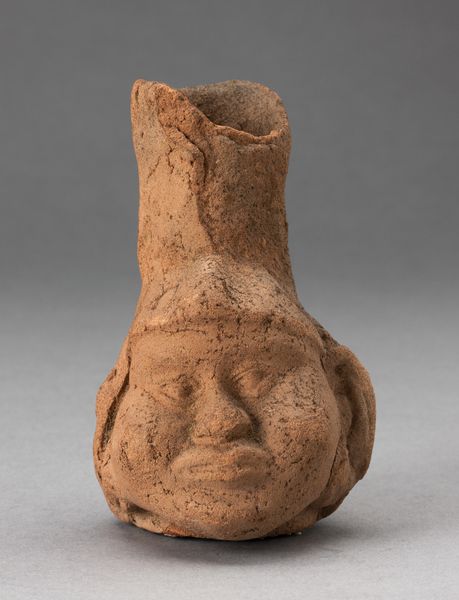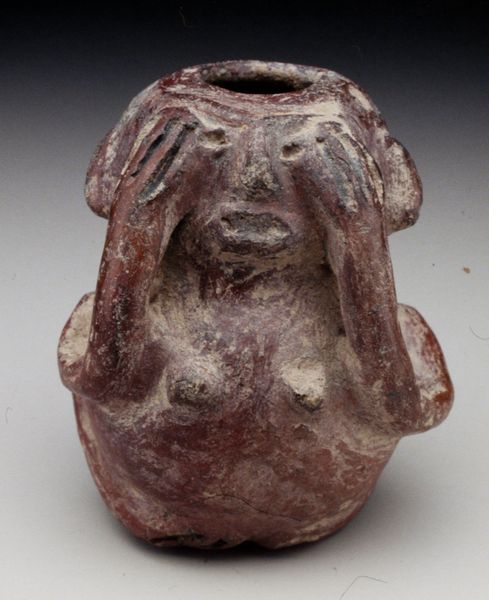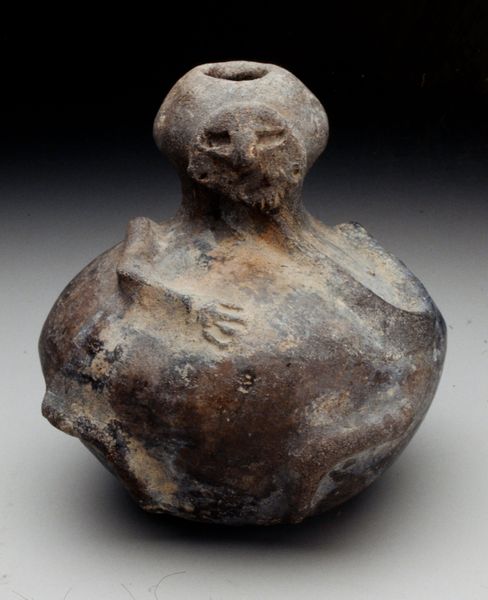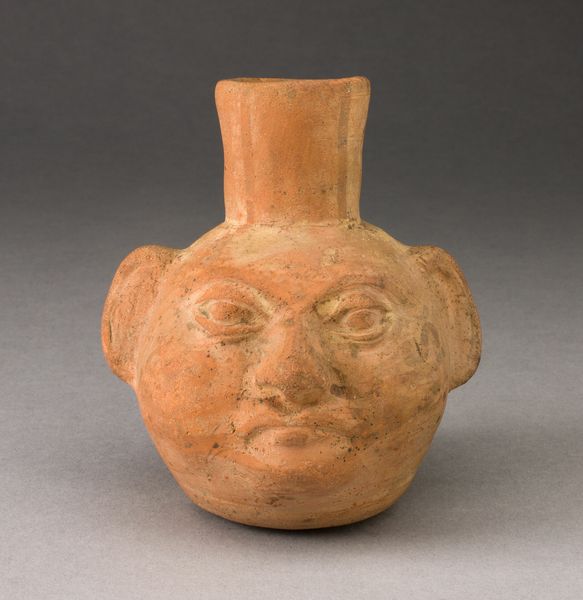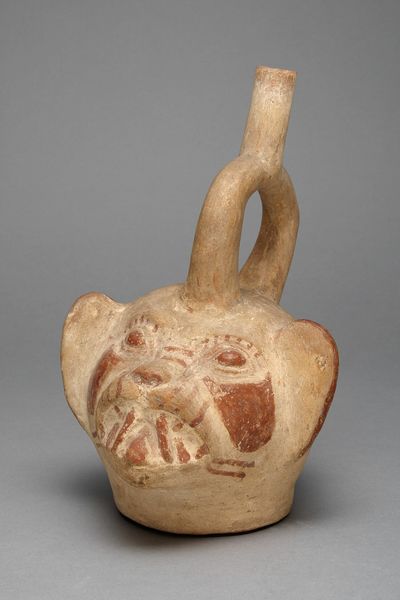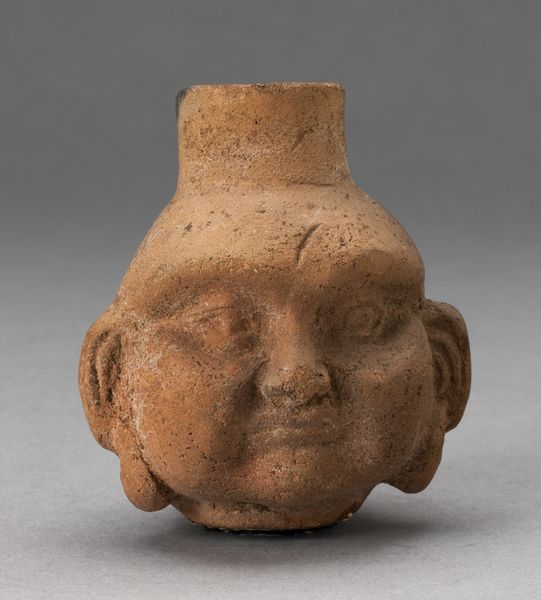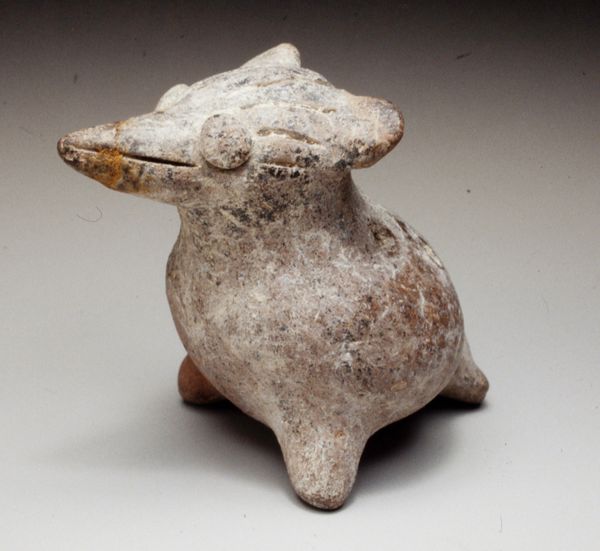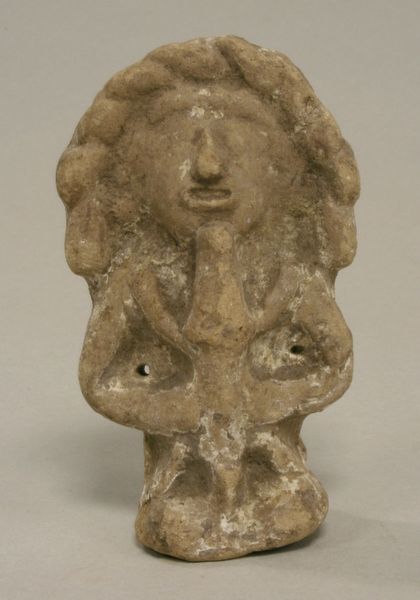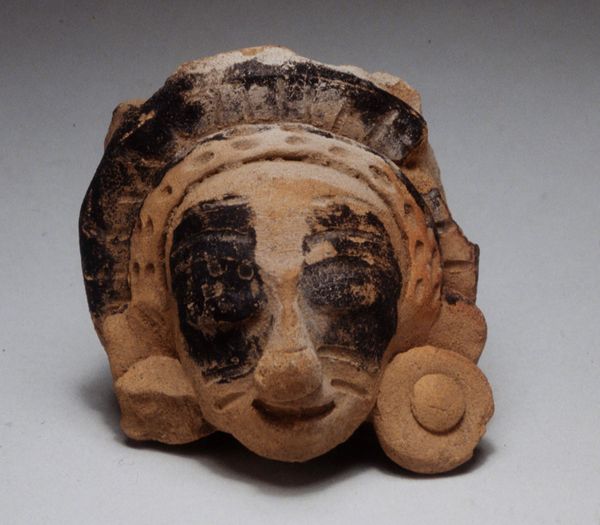
ceramic, earthenware
#
portrait
#
ceramic
#
figuration
#
vanitas
#
earthenware
#
ancient-mediterranean
#
ceramic
Copyright: Public Domain
Curator: We're looking at a whistle in the form of a skull, crafted around the 9th century. The anonymous artist shaped it from earthenware. It now resides here at the Minneapolis Institute of Art. Editor: Well, my immediate impression is surprisingly whimsical for a skull. It's not particularly menacing. There's a kind of asymmetry in the eye sockets and mouth that makes it almost comical. Curator: Interesting. Formally, consider the subtle modelling of the bone structure. The artist has prioritized a simplified representation; the features are rounded, and the material itself, earthenware, lends a certain earthiness, despite its morbid subject matter. Do you find the medium appropriate? Editor: Absolutely. Earthenware would have been readily available. Think of the social context. Such an object likely had ritualistic significance. The sound produced by the whistle perhaps held some specific meaning related to death or ancestor veneration within the culture. The crudeness also implies it may have been used more by ordinary citizens instead of elites. Curator: Precisely. Now, notice the surface texture— the somewhat pitted quality, combined with its relatively simple, one could argue unsophisticated symmetrical organization...It has almost primitive aesthetics which really work in harmony with the artwork's historical age. What compositional techniques do you see used to communicate "skull"? Editor: Mainly the dark void of the eyes and nose. Beyond that, there isn't much beyond some perfunctory bumps. But that only highlights how culturally shaped our understanding of a skull is. The symbol transcends perfect naturalistic accuracy. Its imperfections allow the symbolic load to rest easier upon the viewer's social associations. Curator: And the decision to render it as a functional whistle? How does utility impact interpretation? Editor: Ah, that’s key! By being functional it merges two realms of lived experiences – ritual/spiritual practice with everyday life. Perhaps children blew this whistle as they played. Its banality juxtaposed with that implied cultural weight... fascinating. Curator: It brings new meanings to the ancient vanitas theme, no? It allows people to interact with death and decay instead of just fearing or admiring it passively. Editor: Precisely. By blowing, handling and seeing it constantly they likely formed new perspectives on existence that differ dramatically from ours! The piece definitely prompts one to meditate not only the artwork itself, but also on our relationship with history, ritual, symbolism, sound, and mortality. Curator: I concur. Thinking about how visual components can still influence cultural perceptions today makes this skull especially insightful.
Comments
No comments
Be the first to comment and join the conversation on the ultimate creative platform.
